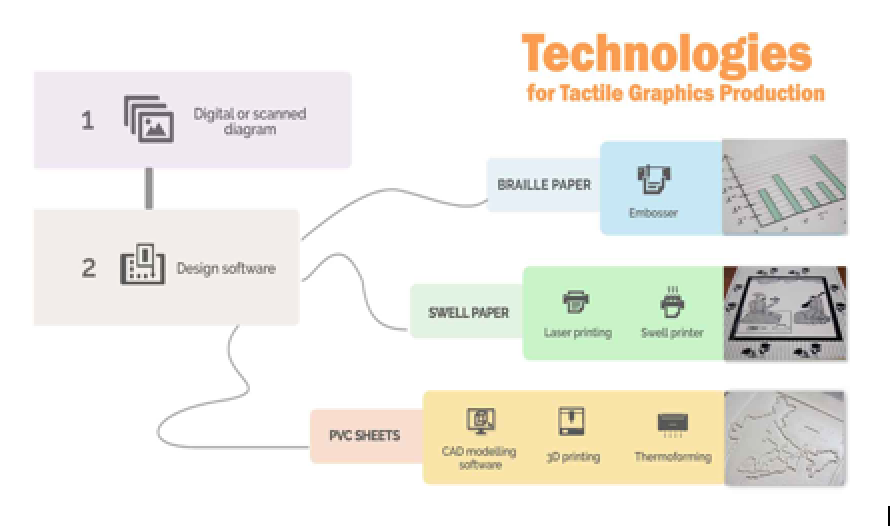What is Tactile Graphics
Tactile Graphics are images that consist of raised lines and textures that can be used by people with visual impairment to
understand some graphical information using their sense of touch. Tactile Graphics are produced using embossing or other technologies
on physical medium like swell paper or PVC sheets. This technology is very useful in
various fields like Education where textual content in Braille can be made more comprehensible using tactile diagrams.
Conversion of 2D images to Tactile Graphics
Tactile diagram is not a direct conversion of visual image to raised representation. With vision, a lot of information can be captured in a glance wherein through touch, information is sequentially gathered and then integrated to form final image in mind. Therefore, various points based on BANA guidelines are considered for conversion of a visual image to a tactile image.
Overall flow for conversion of normal diagram or image to Tactile Graphics is as follows:
- Analyze the images to understand its complexity, number and size of regions, positioning of labels etc
-
Redesign the image using the professional graphic design software based on international guidelines.
-
Assign suitable textures, line styles and add Braille labels.
-
Convert the file into 3d printer suitable formal and add height
-
Transfer the Stl file to production team for mold creation and thermoforming

The .img-responsive class makes the image scale nicely to the parent element (resize the browser window to see the effect):
Tactile Graphics Production
Multiple ways of producing tactile diagrams from the print tactile images have been established and the type of production method used depends on the complexity of diagrams and the volume required.

The .img-responsive class makes the image scale nicely to the parent element (resize the browser window to see the effect):

